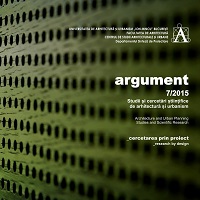PROIECT DE CĂLĂTORIE VORED |1911-2014. STUDIU APLICAT ASUPRA DRUMULUI VOYAGE D’ORIENT AL LUI LE CORBUSIER
TRAVEL PROJECT VORED |1911-2014. APPLIED STUDY FOLLOWING LE CORBUSIER’S “VOYAGE D’ORIENT”
Author(s): Ana Maria CrişanSubject(s): Education, Architecture, Recent History (1900 till today), Sociology of Education
Published by: Editura Universitară “Ion Mincu”
Keywords: architecture; architectural journey; aesthetic process; architectural map; visual education; Le Corbusier;
Summary/Abstract: How do you educate yourself to become an architect in the 21st century? In the contemporary era dominated by mass media and the visual globalization, the old learning process of assimilation and creation suffers a short circuit, being strongly influenced by the loan of the elements taken out of the context. Therefore, we return to the 19th century tradition governing the educational process in the architectural school, to the canonical educational phenomenon discovered alongside the initiation trails. Education through aesthetic analysis is diverted 100 years ago, resuming the practical application of Le Corbusier’s journey through Italy. This study implements the observations of the aesthetic process according to his travel notebooks, reconstructing a similar path to be followed by the first grade architecture students during their practice sessions. The methodology follows the definition of the aesthetic process’ steps, the composition principles related to the architectural mappings. It defines the models and builds the system according to which the educational process is implemented. The study area is restricted to the Italic Peninsula, cumulating the same points as noted by the architect along with the similar stylistic objectives. The analysis resumes the aesthetic stages described by Le Corbusier; it reconstructs the different typologies of the observed as a trail’s foundation and relates the distinct steps in assimilating the specific categories of the observed objects. The key of the aesthetic process is enclosed in the identity of the architectural object as observed, seen, assimilated through visual loan or memorized, imagined and recreated. The main aim is to reconstruct the formation process of an architect, analogue to Le Corbusier’s pathway. By focusing the assimilation on the process of seeing, observing, imagining, we target to orientate the educational process towards an active assimilation and a responsible future creation. Thus, the study builds itself as an active story of the famous journey to the East, a story rooted in the past and with currently reflexes, a story of the architectural objects seen beyond the observer’s temporal affiliation. Time travel is simultaneously a dialogue between the becoming architects and Le Corbusier, as well as a story - the story of the creative adaptation and the progressive imagination.
Journal: Argument
- Issue Year: 2015
- Issue No: 7
- Page Range: 45-60
- Page Count: 16
- Language: English, Romanian

